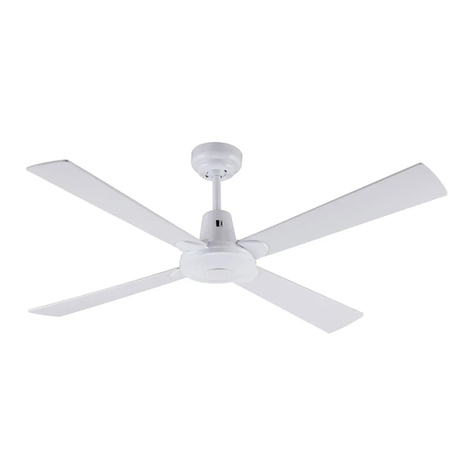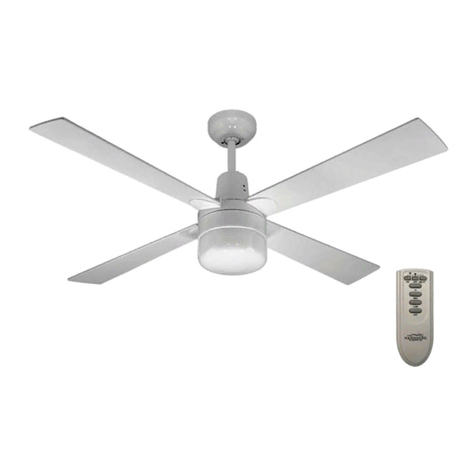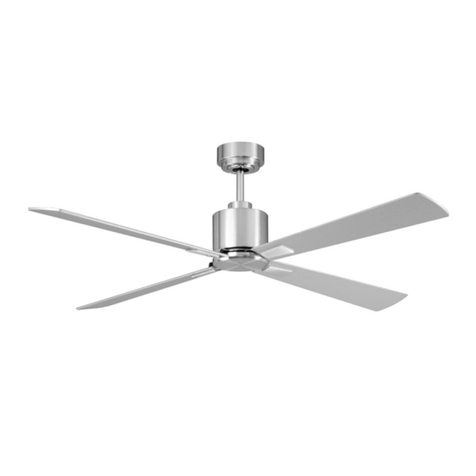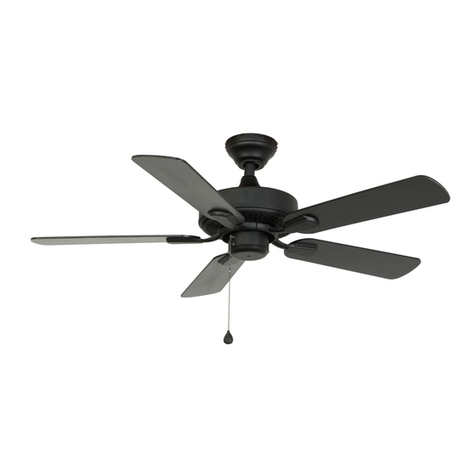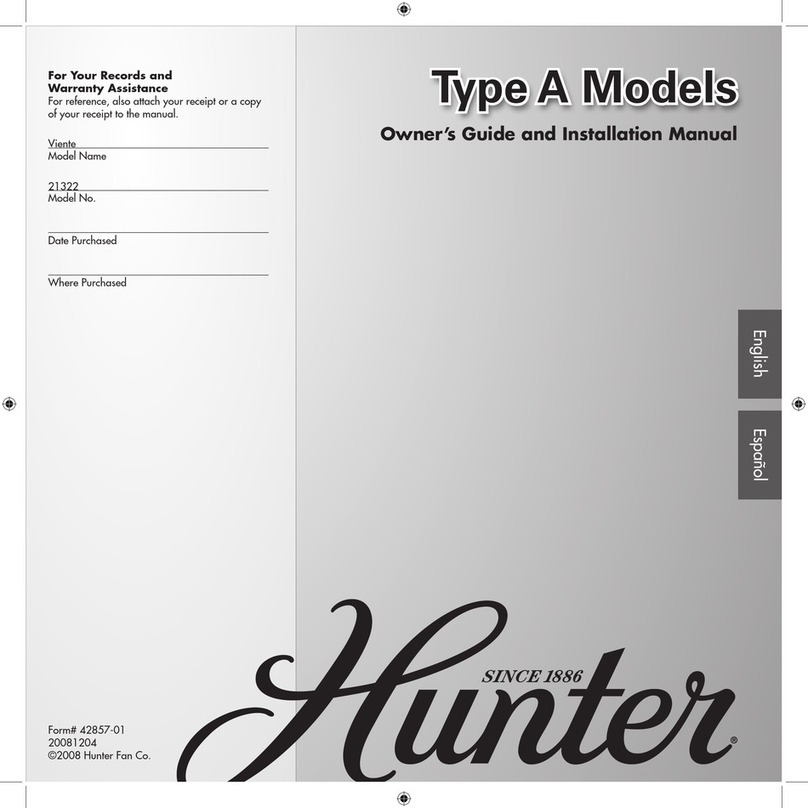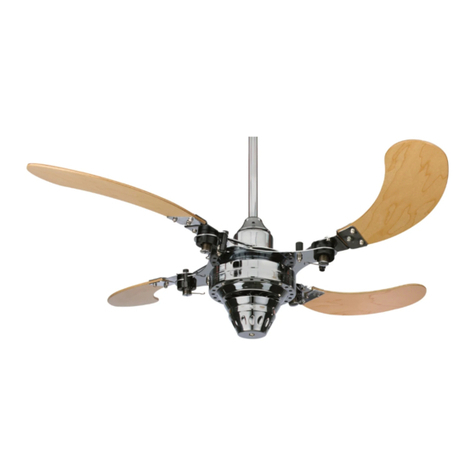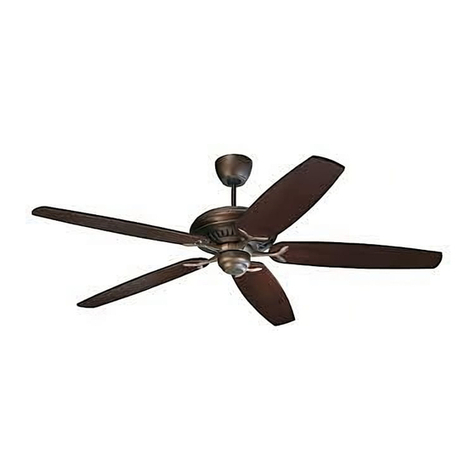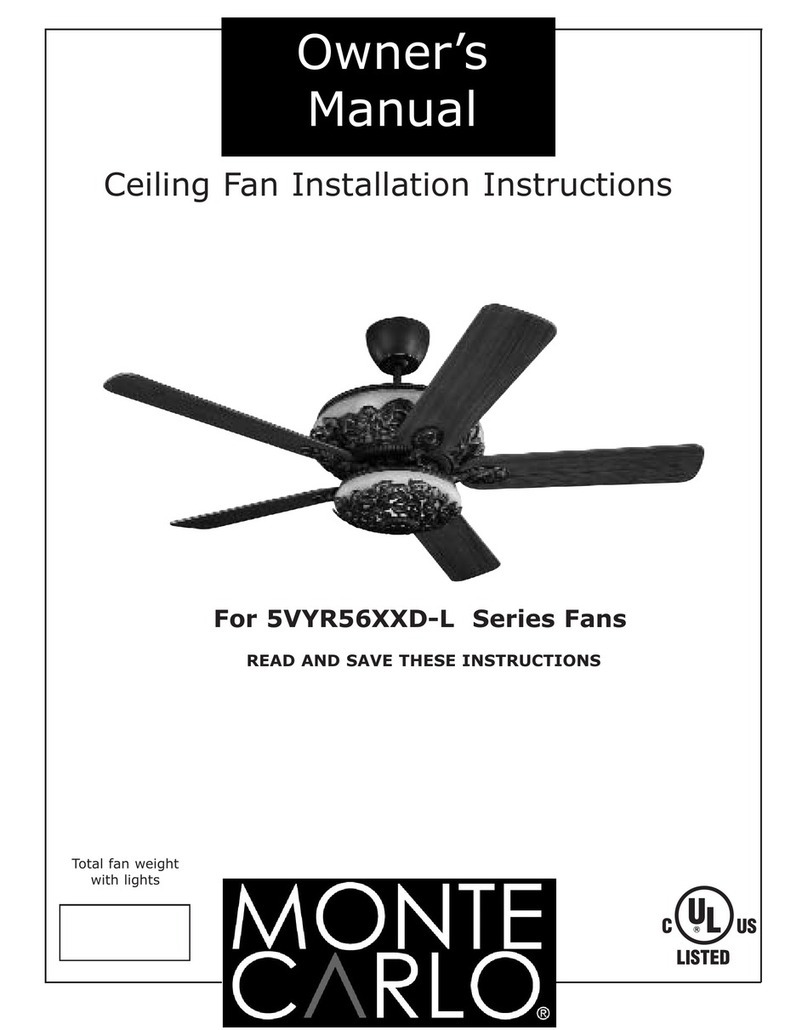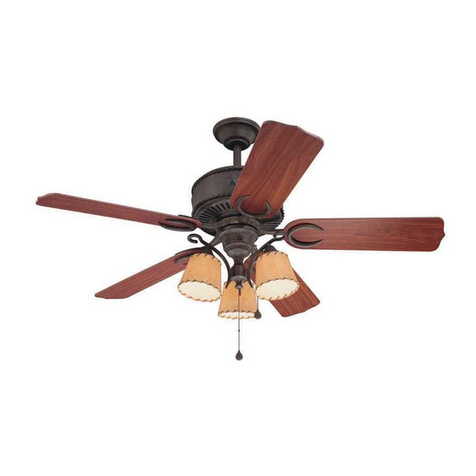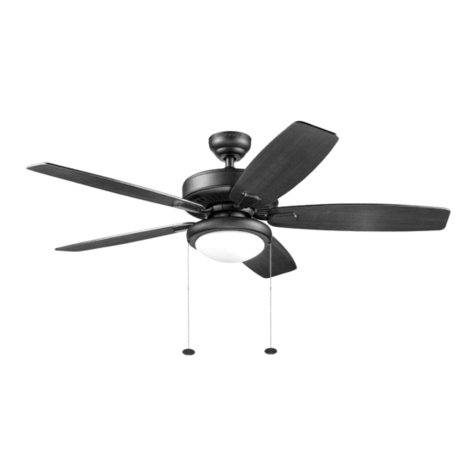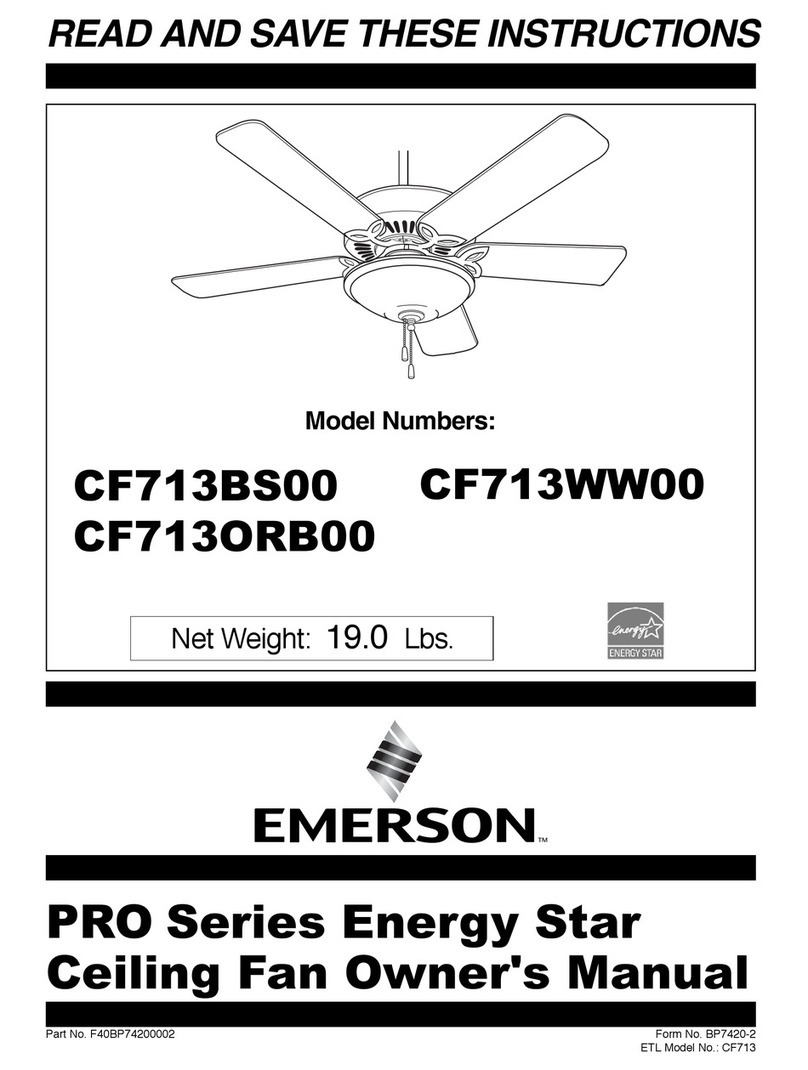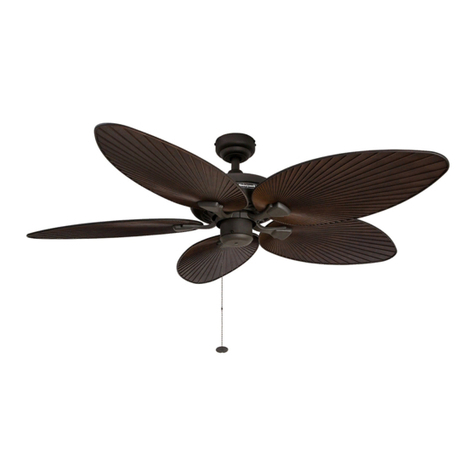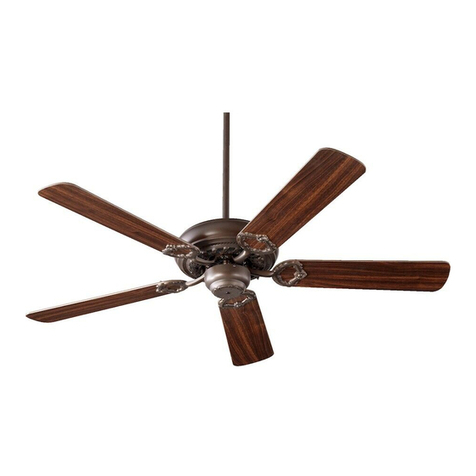
SAFETY TIPS.
page 1
WARNING: To reduce the risk of electrical shock, turn off the electricity to the fan at the main fuse box or circuit
panel before you begin the fan installation or before servicing the fan or installing accessories.
1. READ ALL INSTRUCTIONS AND SAFETY INFORMATION CAREFULLY BEFORE INSTALLING YOUR FAN
AND SAVE THESE INSTRUCTIONS.
CAUTION: To avoid personal injury, the use of gloves may be necessary while handling fan parts with sharp
edges.
2. Make sure all electrical connections comply with Local Codes or Ordinances, the National Electrical Code,
and ANSI/NFPA 70-1999. If you are unfamiliar with electrical wiring or if the house/building wires are
different colors than those referred to in the instructions, please use a qualified electrician.
3. Make sure you have a location selected for your fan that allows clear space for the blades to rotate, and at
least seven (7) feet (2.13 meters) of clearance between the floor and the fan blade tips. The fan should
be mounted so that the tips of the blades are at least thirty (30) inches (76 centimeters) from walls or
other upright structures.
4. The outlet box and ceiling support joist used must be securely mounted, and capable of supporting at
least 35 pounds (16 kilograms). The box must be supported directly by the building structure. Use only
CUL (Canada) or UL (USA) listed outlet boxes marked "FOR FAN SUPPORT."
WARNING: To reduce the risk of fire,electrical shock, or personal injury, mount to the outlet box marked
"Acceptable for Fan Support of 15.9 kg (35 lb) or less" and use the mounting screws provided with the outlet
box. Most outlet boxes commonly used for the support of lighting fixtures are not acceptable for fan support
and may need to be replaced. Consult a qualified electrician if in doubt.
WARNING: To reduce the risk of fire,electrical shock, or personal injury, wire connectors provided with this fan
are designed to accept only one 12 gauge house wire and two lead wires from the fan.If your house wire is
larger than 12 gauge or there is more than one house wire to connect to the corresponding fan lead wires,
consult an electrician for the proper size wire connectors to use.
5. Electrical diagrams are for reference only. Light kits that are not packed with the fan must be CUL
(Canada) or UL (USA) listed and marked suitable for use with the model fan you are installing. Switches
must be CUL (Canada) or UL (USA) general use switches. Refer to the instructions packaged with the
light kits and switches for proper assembly.
6. After installation is complete, check that all connections are absolutely secure.
7. After making electrical connections, spliced conductors should be turned upward and pushed carefully up
into the outlet box. The wires should be spread apart with the grounded conductor and the
equipment-grounding conductor on opposite sides of the outlet box.
WARNING: To reduce the risk of fire or electrical shock, do not use this fan with any solid state speed control
device or control fan speed with a full range dimmer switch. [Using a full range dimmer switch to control fan
speed will cause a loud humming noise from fan.]
8. Do not operate the reverse switch until fan has come to a complete stop.[Note: If using remote control
with reverse capability, reverse fan blade direction only when on LOW speed.]
9. Do not insert anything between the fan blades while they are rotating.
WARNING: To reduce the risk of personal injury, do not bend the blade arms during assembly or after
installation. Do not insert objects into the path of the blades.
WARNING: To avoid personal injury or damage to the fan and other items, be cautious when working around or
cleaning the fan.
10. Do not use water or detergents when cleaning the fan or fan blades.A dry dust cloth or lightly dampened
cloth will be suitable for most cleaning.
WARNING: To reduce the risk of personal injury, use only parts provided with this fan. The use of parts OTHER
than those provided with this fan will void the warranty.
NOTE: The important safety precautions and instructions appearing in the manual are not meant to cover all
possible conditions and situations that may occur. It must be understood that common sense and caution are
necessary factors in the installation and operation of this fan.

